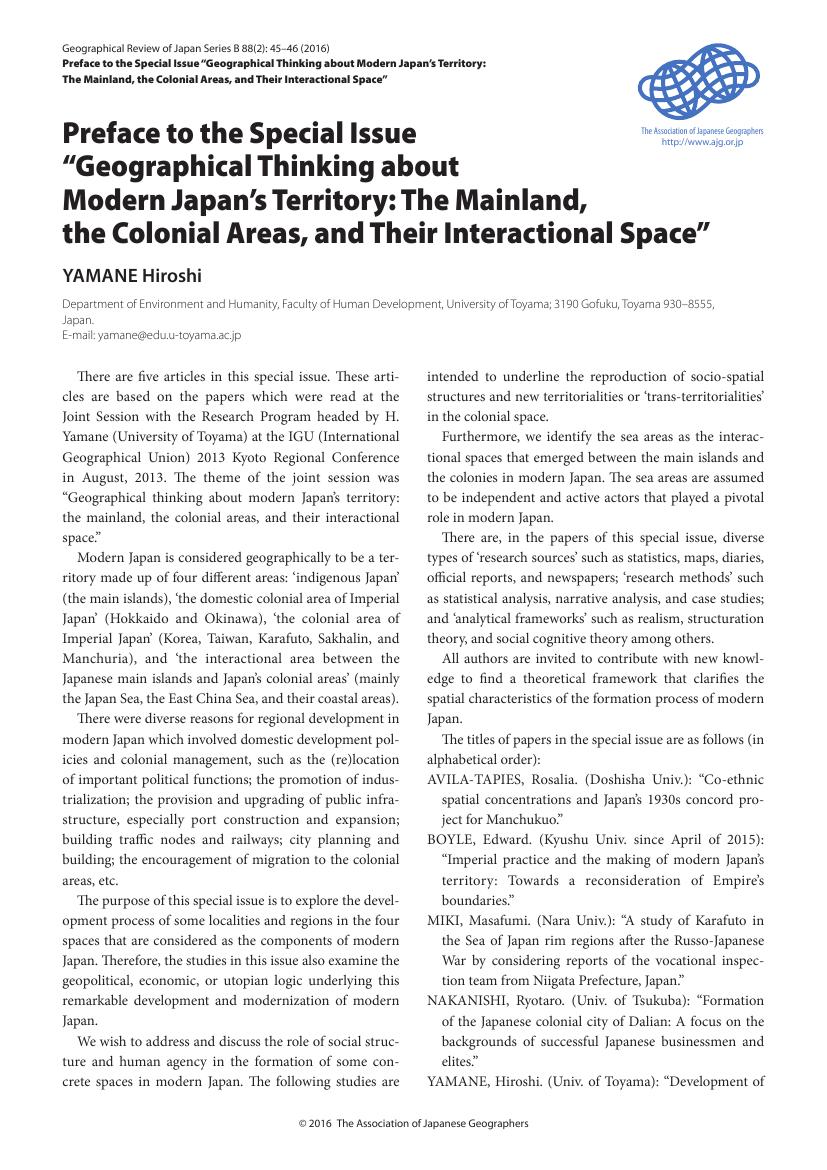1 0 0 0 OA Development of Important Ports and Sea Areas in the Territorial Expansion of Modern Japan
- 著者
- YAMANE Hiroshi
- 出版者
- The Association of Japanese Geographers
- 雑誌
- Geographical review of Japan series B (ISSN:18834396)
- 巻号頁・発行日
- vol.88, no.2, pp.96-110, 2016-09-30 (Released:2016-09-30)
- 参考文献数
- 23
- 被引用文献数
- 1 1
After the opening of Japan and the Meiji Restoration in the 1850s–1860s, the Japanese land space changed drastically with domestic restructuring and the expansion of overseas colonies. In the process, the stronger presence of Japan in Northeast Asia was accompanied by the reinforcement of the ports on the shores of the Japan Sea and the East China Sea. Some good natural ports on the mainland competed with rival ports in supplying services for the continent and in harbor improvements, and became positioned as pivotal nodes for international trade or passenger transit in the Northeast Asian network. This paper focuses on two successful ports, Tsuruga and Nagasaki, and explores two problems from the perspective of ‘realism-structuration.’ One is how locally influential individuals as special human agencies contributed to the regional formation of these ports through their time-space practices in the expansion process. The other is how they recognized and understood or experienced the sea areas surrounding the Japanese mainland and the continental area. Two key people, Owada in Tsuruga and Suzuki in Nagasaki, actively visited the continental area, and insisted on and practiced development of their localities in close relationship with the continental area. In this sense, they were special human agencies precisely embodying the structure that provided regional formation. Finally, the following inference is made: In a multilateral area as an actor-network, from the viewpoint of Actor-Network Theory, the sea areas became involved in the networking as non-human actors.
- 著者
- YAMANE Hiroshi
- 出版者
- The Association of Japanese Geographers
- 雑誌
- Geographical review of Japan series B (ISSN:18834396)
- 巻号頁・発行日
- vol.88, no.2, pp.45-46, 2016-09-30 (Released:2016-09-30)
